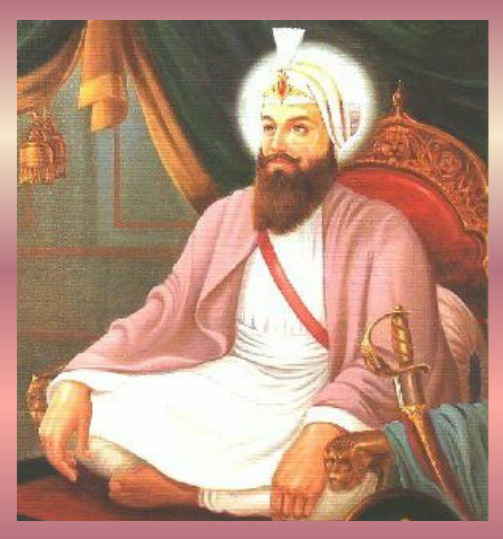Guru Har Rai Ji

Seventh Guru of Sikhism
Guru Har Rai (Gurmukhi: ਗੁਰੂ ਹਰਿ ਰਾਇ), born on 16 January 1630 in Kiratpur Sahib, was the seventh Guru of Sikhism, succeeding his grandfather Guru Hargobind Sahib Ji in 1644. He led the Sikh community during a time of relative peace, following the era of militarization introduced by his grandfather, and continued to uphold the balance of Miri and Piri—the Sikh doctrine of combining spiritual guidance with worldly responsibility.
Early Life and Background

Guru Har Rai was the son of Baba Gurditta, the eldest son of Guru Hargobind, and Mata Nihal Kaur. As a child, he displayed deep humility and compassion. At the age of 14, he was appointed Guru by Guru Hargobind. Though young, he possessed immense spiritual depth and was devoted to preserving the teachings of Guru Nanak while maintaining the defensive strength of the Sikh Panth.
Spiritual Leadership and Teachings
Though he inherited his grandfather’s army of 2,200 horsemen, Guru Har Rai chose a peaceful approach to leadership. He did not engage in warfare but maintained military readiness to defend the community if necessary. His reign focused on spiritual upliftment, social welfare, and environmental stewardship.
Guru Har Rai emphasized seva (selfless service) and compassion. He set up dispensaries, established herbal gardens for medicine (notably the Naulakha Bagh), and cared for the sick. He is often regarded as the “Nature-loving Guru” for his deep concern with the natural world and efforts to preserve it.
Political Context and Relations with the Mughals
Guru Har Rai’s era coincided with the Mughal war of succession between Dara Shikoh, the liberal-minded eldest son of Shah Jahan, and Aurangzeb, the orthodox younger brother. The Guru extended support to Dara Shikoh, who had shown an interest in Sikh teachings. After Aurangzeb emerged victorious, he summoned Guru Har Rai to his court in Delhi.
Instead of appearing himself, Guru Har Rai sent his elder son, Ram Rai, as his representative. However, to please Aurangzeb, Ram Rai altered a verse from the Adi Granth, which deeply upset Guru Har Rai. He declared that Ram Rai had violated the sanctity of Sikh scripture, and excommunicated him.
Succession and Death

Due to Ram Rai’s disobedience, Guru Har Rai named his younger son, Har Krishan, as the eighth Guru of the Sikhs. This decision upset the Mughal court, but Guru Har Rai remained firm. He passed away on 6 October 1661, at the age of 31, in Kiratpur Sahib.
Legacy
Guru Har Rai is remembered for his gentle spirit, humility, and commitment to Sikh principles in a turbulent political climate. He expanded the Sikh mission peacefully, strengthened the community’s organizational structure, and left behind a legacy of compassionate service, environmental awareness, and unyielding faith in the sanctity of Gurbani. His life was a bridge between the militarized past and the challenges that would come under Aurangzeb’s rule during the tenure of future Gurus.

